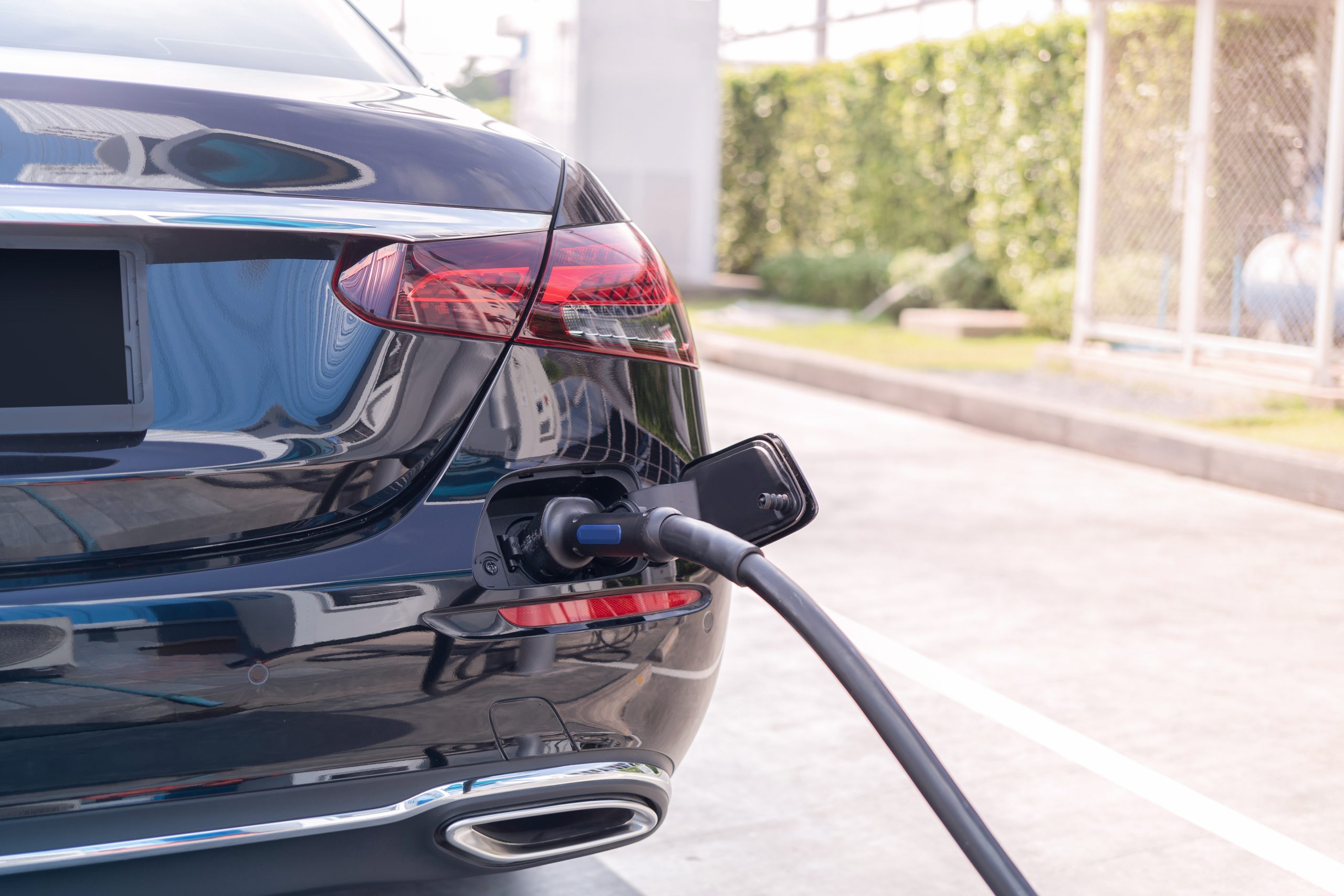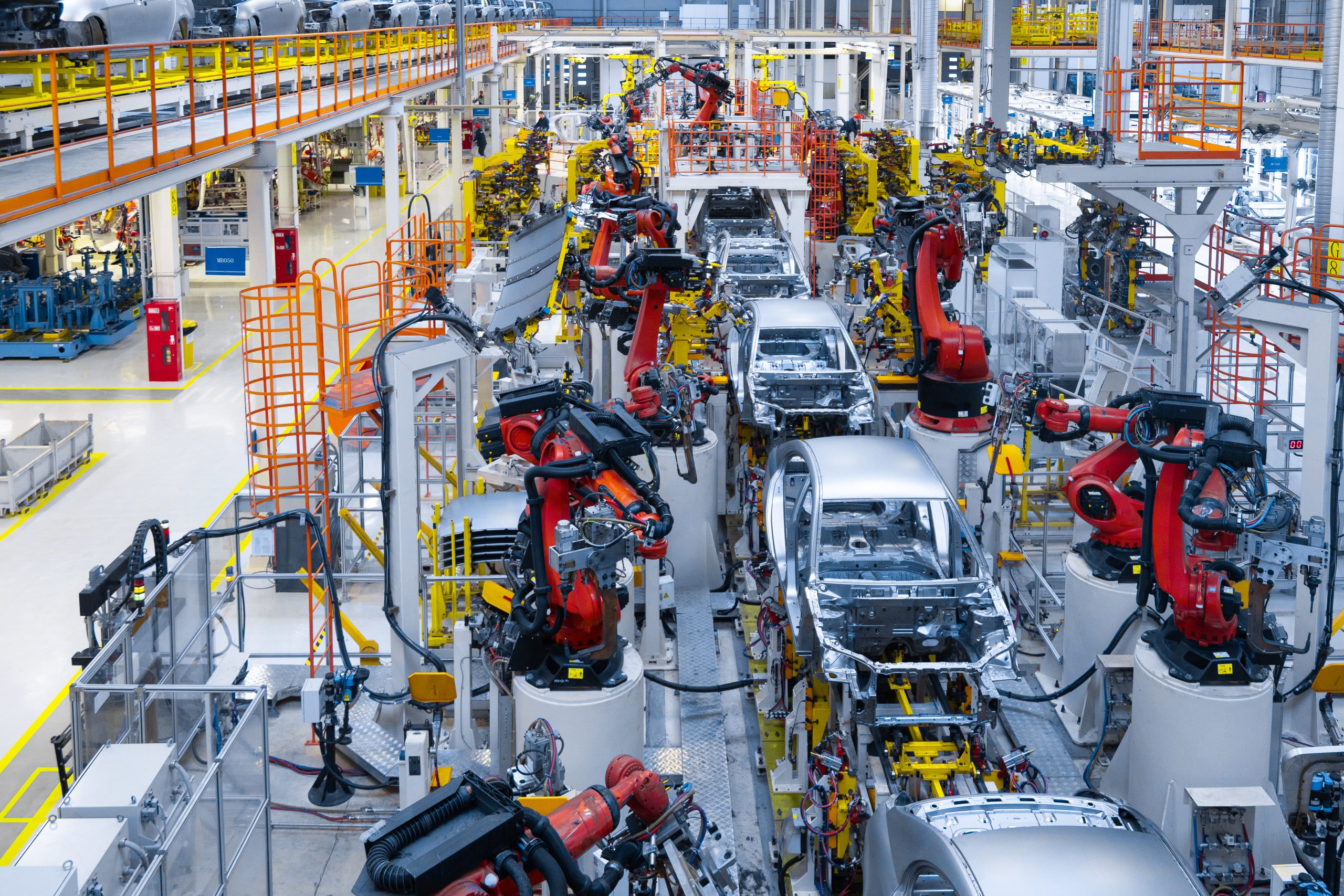For decades, the European automotive sector has been a backbone of the continent’s economy and industrial landscape. Renowned for innovation, design and engineering prowess, Europe’s auto industry supports millions of jobs and drives significant economic activity. Countries such as Germany, France and Italy boast a rich heritage of automotive innovation—from the very first combustion engines to world-class design and engineering capabilities. Today, however, this proud legacy finds itself at a critical juncture. Multiple forces are reshaping the industry, from global competition and shifting vehicle production to Asia, to the meteoric rise of electric mobility and software-driven automotive technologies. Some of the challenges are accelerated further by environmental mandates.
Against this backdrop, the key question is how Europe can preserve its automotive prominence while adapting to changing market demands and cost structures. The challenges facing European automakers are not just operational and financial; they also include significant social dimensions, such as the need to safeguard jobs and reskill the workforce. Additionally, the profound transformation of the supplier industry—and the substantial financing required for research and development—highlight the need for robust partnerships along the supply chain, with governments, trade unions and tech innovators alike.
This article aims to map out the major trends reshaping the automotive landscape, explore the challenges these trends pose for European automakers and their stakeholders and finally discuss the opportunities for negotiation and strategic collaboration. By the end, you’ll see how a nuanced understanding of production shifts, emerging technologies and labor dynamics can open the door to pragmatic solutions. These solutions may balance economic viability with social responsibility—ultimately securing Europe’s place at the forefront of a rapidly evolving global industry.
Key Trends in the Automotive Industry
Shift of Production to Asia
One of the most significant shifts shaping the automotive sector is the rising dominance of Asian markets—especially China. Historically, Europe led the way in automotive production, with factories concentrated in countries like Germany, France, Spain and Italy. However, lower labor costs, strong government incentives and booming local demand in Asia have encouraged manufacturers to relocate or expand operations in these regions.
- Cost-Effectiveness: Setting up manufacturing hubs in China and other Asian economies can be more economical, thanks to lower labor expenses and attractive investment packages.
- Growing Consumer Base: Markets like China now have a massive, rapidly expanding middle class keen to purchase vehicles—electric and otherwise—creating a self-sustaining cycle of demand.
Implications for Europe: As more production capacity is shifted abroad, European plants may operate below capacity or even face closure if they cannot adapt to new technologies or cost-competitive strategies. This trend also has political and social ramifications, as governments and unions seek to protect jobs and maintain local manufacturing capabilities.

Electrification & E-Mobility
Alongside the geographic shift in production, electrification stands out as a central disruptor of the automotive status quo. Virtually every global automaker now invests heavily in developing electric vehicles (EVs) and hybrids, aiming to stay ahead of tighter emissions regulations and shifting consumer preferences.
- Emissions Regulations: European directives and national programs increasingly discourage traditional combustion engines, pressing manufacturers to expedite the rollout of EVs.
- Battery Technology: The “race” to improve battery efficiency, reduce costs and secure raw materials (e.g., lithium, cobalt) is intensifying. These innovations can dramatically affect a vehicle’s price point and driving range—two key factors for consumer acceptance.
- New “Co-opetition”: Startups specializing in EV tech, such as battery systems or software, have emerged both as serious competitors and potential collaborators to established carmakers. Strategic investments or partnerships with these high-tech ventures can accelerate traditional OEM’s capabilities while also providing startups with the scale and manufacturing expertise needed to commercialize innovations.
Implications for Automakers: The shift toward electrification is no longer just a regulatory requirement; it has become a defining factor in market competitiveness. Automakers that fail to accelerate their EV strategies risk losing relevance as consumer preferences and government policies push further in this direction. However, success in this transition will depend not just on launching new EV models, but on securing stable battery supply chains, scaling charging infrastructure, and differentiating through technology and brand positioning.
Digital Transformation & Software-Defined Vehicles
Another fundamental trend in the automotive industry is the digital revolution. Cars are increasingly seen as computers on wheels—even servers on wheels—featuring advanced software-based capabilities, infotainment systems, connectivity services and semi-autonomous functions.
- Connected Car Ecosystem: Many vehicles now include features like over-the-air updates, predictive maintenance alerts and app-based controls. Developing these systems requires specialized software engineering skills and robust cybersecurity measures.
- Autonomous Driving: While fully self-driving cars (SAE level 05) remain on the horizon, assisted driving (e.g., lane assist, adaptive cruise control) is commonplace with automated driving poised to emerge. In Europe, SAE level 02 is already in use. All this requires partnerships with tech firms and large-scale data analysis to continuously refine AI models.
Implications for Talent: Traditional mechanical expertise is no longer sufficient; automakers increasingly recruit software engineers and data scientists. Suppliers who primarily focused on mechanical components may have to pivot toward smart systems, sensors and algorithm development.
Sustainability & ESG Pressures
Along with electrification, the broader call for corporate responsibility is transforming how automotive companies operate. Environmental, Social and Governance (ESG) criteria are rapidly becoming central to corporate strategies.
- Sustainable Supply Chains: Beyond emissions, companies face scrutiny over every step of production, from sourcing raw materials to managing end-of-life recycling for batteries and vehicle components.
- Circular Economy Approaches: Automakers are experimenting with ways to refurbish, reuse or recycle parts. Some are designing vehicles to be more easily dismantled and repurposed, helping to reduce waste.
- Social and Governance Factors: Pressures around labor practices, diversity and transparency are rising. Stakeholders, including investors and consumers, expect companies to demonstrate ethical, forward-looking governance in addition to pursuing profits.
Implications for Industry Leaders: Beyond meeting compliance requirements, sustainability efforts are increasingly shaping brand reputation, investor confidence, and long-term profitability. Companies that integrate ESG principles proactively rather than treating them as a box-ticking exercise stand to gain a competitive edge. From circular economy models to transparent supply chains, those who lead in sustainable practices will likely set the standards that the rest of the industry must follow.
Challenges Facing European Automakers
and Associated Industries
Workforce Restructuring
One of the most significant challenges lies in managing the human impact of ongoing industry transformations.

- Job Losses vs. Skill Gaps: As production relocates to Asia and automation gains ground, certain manufacturing jobs in Europe are at risk of being phased out. Simultaneously, there is a shortage of skilled professionals in fields like software engineering, battery technology and data analytics—creating an urgent need for re- and upskilling.
- Social and Political Pressure: Governments and unions are highly sensitive to large-scale layoffs, which can trigger public outcry and damage corporate reputations. Negotiations often center on phased retirements, retraining programs or regionally focused transition funds.
- Long-Term Talent Pipeline: Beyond addressing immediate layoffs, automakers must cultivate a pipeline of next-generation talent. Partnerships with universities and vocational institutions can provide specialized training programs that match the evolving skill requirements of electrification and software-defined vehicles.
Supplier Industry Transformation
The supplier sector underpins the entire automotive ecosystem, yet it faces immense pressure to keep pace with rapid technological changes.
- Pivot from Mechanical to Software: Traditional suppliers specialized in parts like transmissions, engines and brake systems. Many now find themselves needing to integrate electronics, sensor technology and software solutions to remain competitive in an EV- and software-centric market. Some suppliers (e.g., Continental, Bosch), have created entire software divisions or acquired smaller tech startups to remain competitive in areas like autonomous driving, connectivity or in-car infotainment.
- Financing the Shift: Smaller suppliers can struggle to secure capital for new R&D efforts or equipment upgrades. This challenge is especially acute as they simultaneously contend with fluctuating production volumes due to offshoring or reduced consumer demand.
- Complexity of Collaboration: Some suppliers enter alliances or mergers to pool resources and broaden capabilities. However, merging corporate cultures and ensuring equitable benefit-sharing can be fraught with difficulty.
R&D Funding Gaps
Developing the next generation of vehicles—especially electric and autonomous platforms—requires massive, sustained investment in research and development.
- High Costs, High Stakes: Battery technology alone demands continuous innovation to improve range, reduce cost and ensure safety. Northvolt have secured over 15 billion in funding to build the world’s “greenest” EV battery and make Europe independent from Asian imports, but they still haven’t delivered on their promise. Meanwhile, software investments for autonomous driving can also reach into the billions.
- Competition for Capital: European automakers and suppliers vie for global investment against deep-pocketed tech giants and emerging Asian EV players. This competition can place pressure on corporate budgets and profitability.
Public vs. Private Investment: Government grants and subsidies can jumpstart nascent technologies, but these programs often come with regulations or oversight. Striking a balance between public and private funding sources, while maintaining momentum, can be tricky—especially in times of economic uncertainty.
Opportunities and Negotiation Pathways
When set against the backdrop of offshoring, industrial upheaval and intense pressure to modernize, European automakers still possess considerable room to maneuver. How they navigate emerging labor dynamics, policy measures, collaborative models and international partnerships—including those in Asia—may shape their resilience for years to come. The following sections outline possible pathways and key considerations that are likely to occupy the spotlight in upcoming negotiations with unions, governments and business partners—both within Europe and abroad.

Union and Workforce Negotiations
Safeguarding jobs while preparing employees for new roles is a top priority for many stakeholders. One area that may gain traction is jointly developed reskilling programs, where union representatives and company management collaborate on workforce retraining. Some experts suggest that integrating digital manufacturing, electrification and software-related skills into collective bargaining agreements could help maintain workforce stability, though successful implementation may hinge on transparent communication and shared funding responsibilities.
Observers also point to phased retirement and early-exit plans as potential negotiation themes. Such strategies might limit the negative impact of sudden layoffs while freeing up positions for redeployed or younger workers. The key variables here include the scope of benefits offered, public support (e.g., regional training grants) and the long-term viability of such schemes as the industry transitions away from traditional combustion engines.
Government Interventions & Policy Support
Public policy often shapes the broader context in which labor negotiations unfold. Possible conversation-starters in this arena include targeted subsidies, co-funding programs or tax incentives tied to research and development, particularly in electrification and connected driving. Policymakers may attach conditions such as minimum job guarantees or local production quotas, making these incentives a double-edged sword: beneficial for spurring innovation, but potentially restrictive if economic conditions shift.
Additionally, public-private partnerships (PPPs) could gain further attention as catalysts for critical infrastructure projects. Joint ventures among automakers, universities and local authorities might expedite the rollout of EV charging stations or create testing corridors for autonomous vehicles. From a negotiation standpoint, agreeing on cost-sharing mechanisms, profit distribution and alignment with environmental goals could become pivotal discussion points.
Partnerships and Alliances
Cross-industry and supplier-OEM collaborations are poised to remain central to Europe’s automotive evolution. Industry analysts note that sharing R&D resources can reduce costs and accelerate product development—particularly for smaller suppliers aiming to pivot toward EV components or connectivity solutions. Yet, forming these partnerships often requires careful negotiations to define intellectual property rights, set milestone expectations and ensure a fair balance of gains for each party.
Likewise, alliances with tech companies and energy providers may expand. Future negotiation conversations could involve how best to integrate 5G and satellite connectivity for vehicles, secure large-scale battery-supply contracts or develop integrated charging solutions that bundle vehicle purchases with home or grid-level energy management. The precise contours of these deals remain uncertain, given the rapid evolution of technology, but effective dialogue among stakeholders is likely to be key.

Collaborations with Asian Partners: Striking Balanced Deals
With production continuing to shift eastward, many observers predict that forging balanced international partnerships could be critical for European automakers. Asia, particularly China, excels in areas like battery cell production, semiconductors and manufacturing scale. European firms, in contrast, bring high-value design and engineering capabilities. Negotiators on both sides may explore co-development projects—whether through shared EV platforms, tech transfers or joint manufacturing facilities.
However, cultural differences, regulatory disparities and intellectual property concerns often complicate such collaborations. Possible solutions might include clear guidelines on IP sharing, transparent investment structures and regular performance reviews to ensure reciprocity. If structured well, these partnerships could offer European automakers cost efficiencies and technology boosts, while Asian partners benefit from Europe’s brand heritage and global market access.
Toward a Sustainable Future
As pressing as the challenges are, there is also an opportunity for profound renewal. Increasingly stringent climate targets suggest that circular economy principles, where materials are continuously reclaimed and repurposed, may prove instrumental for the automotive sector’s environmental and economic resilience. Negotiations with suppliers and policymakers may focus on establishing closed-loop supply chains, incentivizing battery recycling and documenting carbon footprints across the value chain.
At the same time, cultivating regional innovation clusters around research institutions and start-up incubators could help safeguard Europe’s engineering prowess. If companies and unions can establish workable agreements on skill transitions and if governments channel resources into advanced infrastructure and greener technologies, the region might find a way to thrive even as global competition intensifies. Through proactive, carefully structured negotiations at every level—labor, government, industry and international—European automakers can aim for a more stable and sustainable path forward.
The Road Ahead
The European automotive sector stands at a juncture where unprecedented shifts—ranging from further relocating production lines to Asia, to the accelerating demand for electric and digitally enhanced vehicles—are challenging the very bedrock of its industrial heritage. Yet as daunting as these changes may be, they also offer a powerful impetus for reinvention.
The forces reshaping the global market are creating operational, financial and social hurdles for European automakers. These challenges can certainly strain existing structures, but they do not spell an inevitable decline. The negotiation pathways outlined above explore how a forward-looking approach might help companies, governments and labor unions navigate these complexities. Through sensible negotiation and proactive alignment—whether in workforce agreements, forging new alliances or striking balanced deals with Asian partners—stakeholders can channel disruption into long-term stability.
Crucial to success, however, will be the willingness to adopt flexible, innovative strategies that encourage shared responsibility. For instance, collaborative R&D projects could leverage joint investments from automakers and government agencies, while pilot programs with energy providers might spur new EV charging infrastructures that align with both market needs and environmental regulations. Such strategies might not eliminate every risk, but they can forge a more resilient foundation for growth.
Looking ahead, the opportunity for Europe’s automotive sector lies in embracing change without abandoning the region’s longstanding strengths. These include a tradition of high-quality manufacturing, a deep well of engineering expertise and a growing commitment to sustainability. By weaving these assets into negotiations—both at home and abroad—European automakers can remain at the forefront of cutting-edge mobility technologies, even as the global center of gravity continues to shift. In this way, the industry’s current challenges can ultimately serve as catalysts for a more stable, sustainable and socially responsible future.

Andreas Folge is an expert in electronic business with over 25 years of sales experience in the PCB and electronics industry. He has deep knowledge of global market structures, industry segments, and key players, including leading OEMs. With extensive international management experience and a broad professional network, he helps companies navigate complex industry landscapes and drive business success.

Hrvoje Zaric specializes in high-stakes negotiations and strategic deal-making. With decades of experience across industries, he has successfully led multi-party negotiations and shaped transformative business strategies. His expertise spans strategic negotiations, corporate partnerships, and restructuring processes, enabling organizations to drive sustainable growth and long-term value creation.
Crowlight Partners help companies navigate complex negotiations, optimize strategic partnerships, and drive sustainable business outcomes. With a deep understanding of market dynamics and industry-specific challenges, we support organizations in securing competitive advantages and shaping long-term success.
Do you wish to receive a copy of this article as pdf? Send us a note!
Get in Touch
If you’d like to discuss how Crowlight Partners can support you and your business, we’d love to hear from you.



